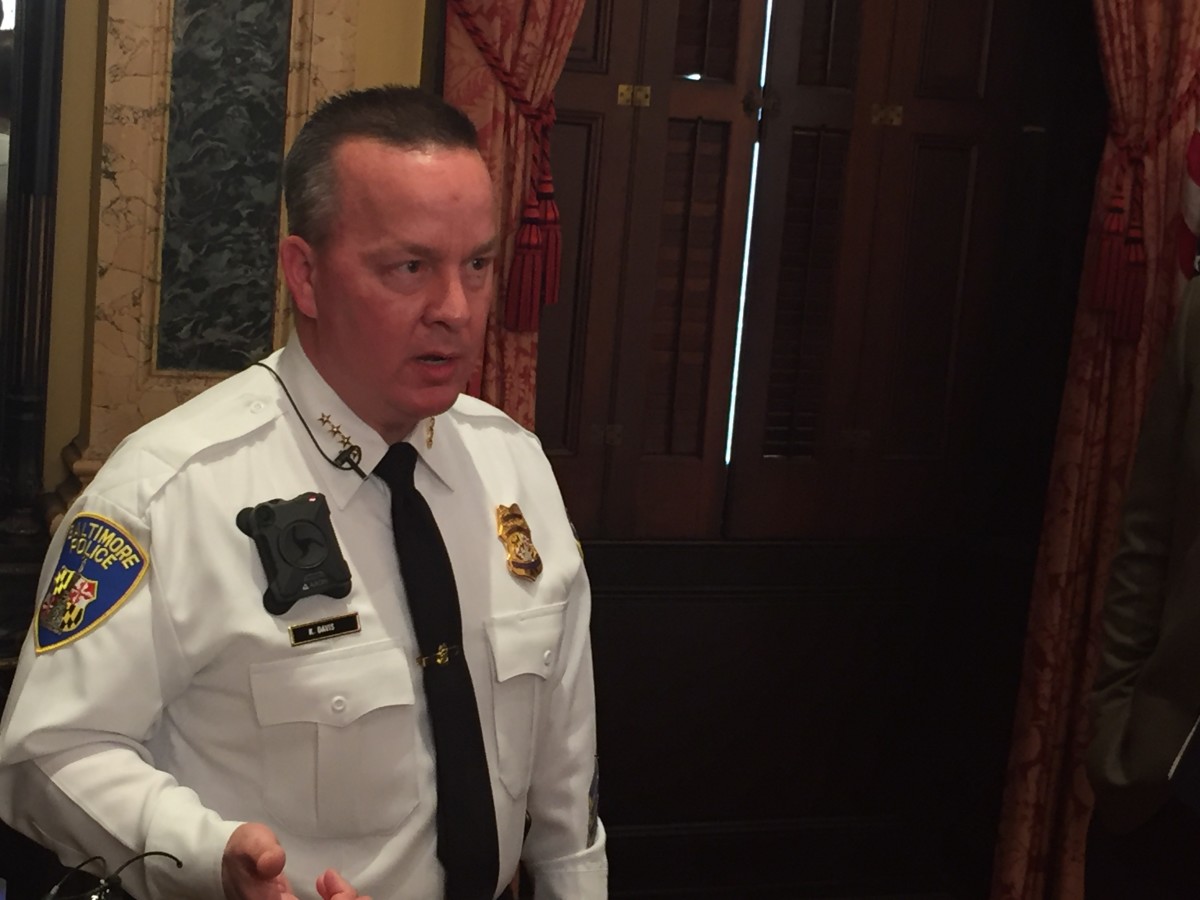The Baltimore Police Department is ready to start outfitting officers with body cameras.
As long as the Board of Estimates signs off next week, an initial group of officers will start to wear body cameras in May, city officials said at a press conference on Thursday. The cameras will arrive after a process that lasted more than a year involving a mayoral veto, a working group, a pilot and a negotiation with chosen vendor Taser International.
It could be a model for other police departments in a city were the spotlight is on police brutality.
“We will be the largest police department in America with a fully implemented body-worn camera program,” Baltimore Police Commissioner Kevin Davis said.
The devices are seen as having the potential to provide more transparency in a city that has seen regular out-of-court settlements for police brutality incidents, and citizen video of a police interaction bring worldwide attention in the case of the death of Freddie Gray.
As she has throughout the process, Mayor Stephanie Rawlings-Blake defended taking the time to get it right. While fielding a question from WBAL-TV’s Jayne Miller about the consequences for officers who turned off the body cameras, Rawlings-Blake pointed out that the initial two-page City Council bill that she vetoed in late 2014 had no such provision.
“There would’ve been no consequence. The only thing they had to do was wear them,” Rawlings-Blake said of police. The City Council bill, she said, “didn’t even require them to turn it on.”
Here are five new things we learned about the body camera program on Thursday.
1. The price
After selecting Taser International’s bid to provide its Axon body cameras for $12.8 million in January, the city’s looked to negotiate with the Scottsdale, Ariz.-based company. The final price was about a million dollars lower than the bid, coming in at $11.6 million, Rawlings-Blake said. That price covers five years. Rawlings-Blake said this was a better deal than that received by Baltimore County, which also went with Taser International.
2. The plan
While the City Hall portion of the process is nearing an end, implementation of the cameras within the department will keep the process ongoing. About 500 officers will receive the cameras at a time during a phased rollout over the 20 months. A total of 2,500 cameras are being introduced in five phases, city purchasing agent Timothy Krus said. Officers will also receive training in how to use the cameras during that rollout.
3. How it works
Wearing a camera above his nametag, Police Commissioner Kevin Davis gave a quick demonstration. The camera, which is attached by a magnet underneath the officer’s shirt, is always buffering. But for footage to be saved, officers have to activate the camera. They do this by pressing a large button in the center of the camera twice, Davis said. Once the camera is activated, officers will also have access to footage from 30 seconds prior to the start of recording.
4. Additional features
Rawlings-Blake said the city negotiated a couple of additional perks. Taser will store the video footage from cameras that are also being implemented in police transport vans at no additional cost. As part of another added feature, the cameras will also automatically turn on when officers flip on their blue lights.
5. About those consequences…
Officials said details of the policy regarding officers tampering with the cameras are still being finalized as they make revisions to the policy that was used during last fall’s pilot. The cameras themselves leave audit trails.







